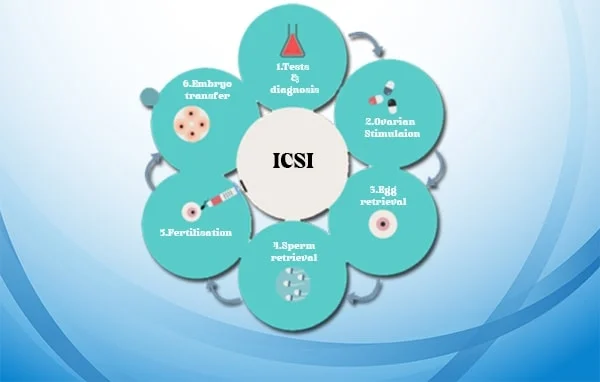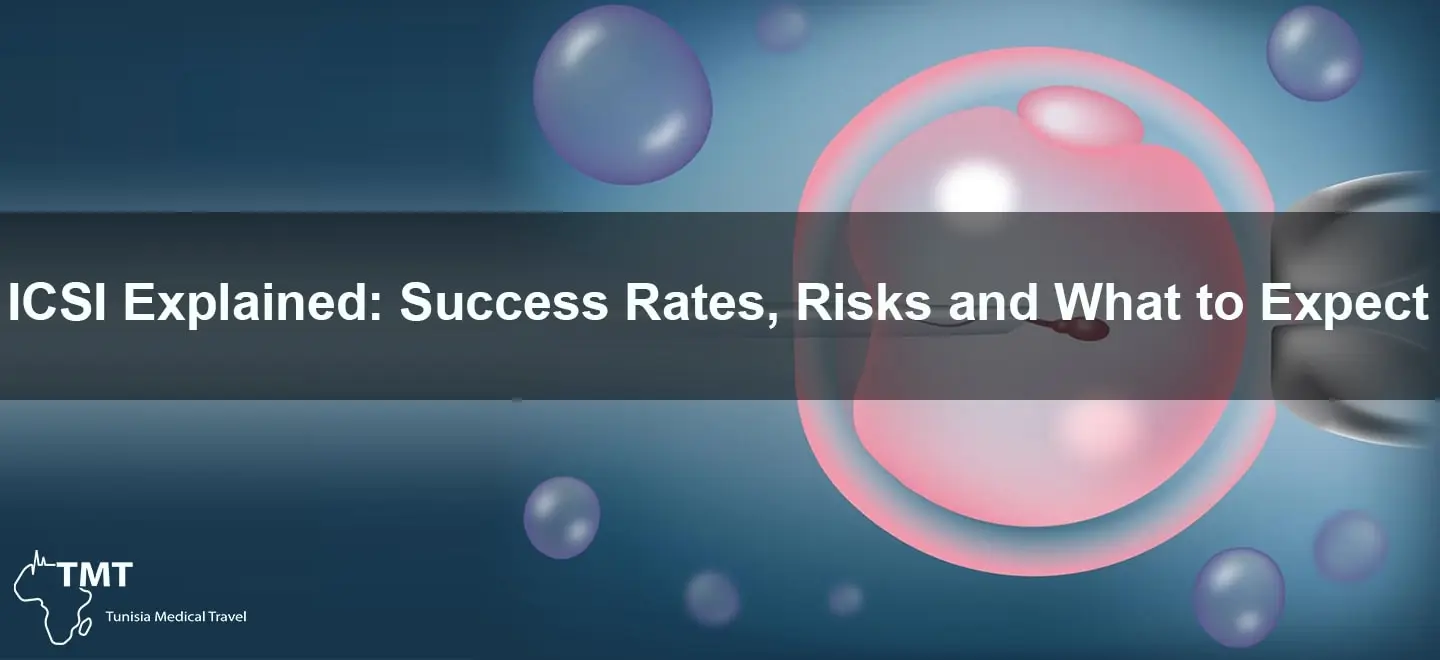ICSI Explained: Success Rates, Risks and What to Expect
ICSI Explained: Success Rates, Risks and What to Expect
When is ICSI recommended, and for who?
ICSI is commonly advised for couples where fertilization has been very poor in previous IVF cycles. A couple who can be classified with unexplained infertility may also benefit from ICSI. An advantage of ICSI is that when fertilization has occurred and good embryo development is observed, the surplus embryos can be frozen and used at a later date. This is providing that a pregnancy was not achieved. The frozen embryos will have already been created using the ICSI procedure. This will prevent the need to go through another full IVF cycle. It is not unfair to say that there may be more chance of accessing and evidencing the cause of the couple’s infertility in the future and applying more successful treatment. This is due to the fact that it is possible to biopsy an embryo and test its genetic content. For men with very low or no sperm in the ejaculate, this can be caused by a variety of conditions. It can be caused by a blockage preventing the sperm from being released in the ejaculate, very poor production of sperm, or the sperm may be produced but has been damaged. This can be caused by previous injury to the testicle, chemotherapy or radiotherapy treatment, or a genetic condition. In some cases, it is possible to surgically extract sperm from the testicle. If ICSI is being considered, this is likely to be the course of action. The surgically retrieved sperm can be used for the ICSI procedure. ICSI has been particularly beneficial for men with poor sperm production or those who have sperm with disorders in movement or shape. This is because the embryologist can select the sperm that appears to have the best chance of creating a viable and successful pregnancy.
What should I expect if I opt for ICSI?
The chance of a couple’s having a baby with the help of ICSI (using the male’s sperm and the female’s egg) is about the same as the success of IVF using the couple’s own sperm and eggs. The average fertilization rate with ICSI is around 70% to 85% of eggs injected. The embryo transfer rate for women under 35 is about 40% to 50%. This is equivalent to a 40% to 50% chance of a pregnancy per cycle, and a cumulative pregnancy rate of about 60%. If several embryos are transferred which result from the procedure, there is a greater chance that the woman will become pregnant with more than one baby. It is important that the couple is counseled about this possibility, and the potential complications of a multiple pregnancy on the health of the mother and the babies. A multiple pregnancy carries a much higher risk of premature labor or miscarriage. If pregnancy does occur, the potential for the babies developing health problems is greater, as well as the risk of abnormalities. In light of this, some couples and doctors consider selective reduction, which is a process by which one or more fetuses in a multiple pregnancy are terminated in order to increase the chance of a healthy pregnancy. This is a very difficult decision, and may have long-term emotional consequences for the parents.
Are there any risks involved with ICSI?
ICSI may make it possible for a genetic defect to be passed on from the father to the child. This specific concern only really affects couples where the infertility problem is linked to a genetic defect in the male. If a male has a genetic defect that has caused his infertility, it is likely that the genetic defect is found on his Y chromosome. This is passed on from the father to the son, and the only way to have a daughter with the genetic defect would be if the Y chromosome bearing the genetic defect was used to produce a female (XX chromosomes). The sex of the child is determined by the sperm, therefore by using ICSI it is possible for a male with a Y chromosome genetic defect to have a son with the very same defect. This is obviously a very serious issue, and if it is a known problem for a couple, it may be worthwhile for them to try and have a child through ICSI using preimplantation genetic diagnosis of the embryos. This way any affected embryos can be discarded and only unaffected embryos will be used to create a pregnancy. This is a complex topic and couples in this situation would be best to consult with a genetics counsellor.
ICSI, along with IVF, has also been linked to a higher chance of twins or multiple births. And this can place a lot of stress on couples who are only looking to create one child. Carrying multiple foetuses can pose risks for both mother and children, so a twin pregnancy is something that a specialist needs to try and avoid. Multiple pregnancies are possible due to the number of embryos that are inserted back into the mother’s body. Starting a pregnancy with twins after IVF with or without ICSI is an undesirable outcome for many couples. But for others, it is a consequence that they are willing to accept. Because of an increased likelihood of multiple pregnancies, fertility specialists should discuss the option of foetal reduction with couples before starting treatment with ICSI.

What are the success rates of ICSI?
ICSI increases the chance of fertilization and pregnancy, but the chance of success in any individual couple is dependent on their individual circumstances. Couples should discuss this with their doctor, especially if the male partner has very poor sperm quality.Some doctors consider that if fertilization does not occur after two cycles of IVF, then it is more cost-effective to proceed to ICSI cycles rather than continue with conventional IVF. This is because after many cycles of IVF, with embryos failing to fertilize, the subsequent pregnancy rates can decrease because poor quality sperm may have damaged the eggs. Although there appears to be an increase in the rate of birth defects in children born from IVF in general, recent research has indicated that there is no increased risk of birth defects in children born from ICSI. A recent study examined 3000 children conceived by ICSI and found that they were no more likely to have birth defects than naturally conceived children.
Find Out More About ICSI Treatment
The ICSI – intracytoplasmic sperm injection – procedure is the most common use of micromanipulation. The goal for ICSI is to increase the chances of fertilization by injecting a single sperm directly into an egg; this is done by using a glass needle which is done manually, as the name implies. There are several aspects of sperm and egg that are observed prior to fertilization. These include removing cumulus cells from the egg so they can be assessed visually, selecting a mature sperm to be injected into the egg, and finally checking for fertilization of the egg the following day. If the egg has been fertilized, it will be transferred into the woman’s uterus 2–5 days later. It is known that ICSI is used to treat several causes of infertility such as low sperm count, low motility, or in cases where IVF has failed in the past. The success rates for ICSI in recent studies was 30–35% chance of an egg becoming a live birth. Although this is higher than doing regular IVF, it is important to understand that micromanipulation may or may not be right for you, please consult your doctor for more information.

